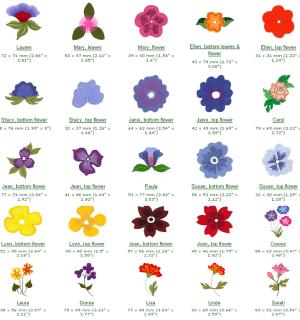
Quilting has a long history, and it would seem a good long future. The traditions of the early quilters have not been lost, and they have been taken all over the world. The British women took their skills and traditions to the other side of the world, to America and to Australia. American quilters in the twentieth century are responsible for bringing this craft into the twenty first century – all over the world.
The Hawaiian people record their history through their quilts, and show the world their spiritual and religious past and present.
The French have used quilting as a medium for their artistic drive, and have produced some of the most beautiful quilts, with intricate and artistic stitching.
Japanese clothing has traditionally included quilt work, and the wonderful silks of the kimono can be fabulously luxurious when appliquéd and quilted.
South Africa, too, has strong love affair with quilting, and the colors and patterns reflect the climate, its colors and its wild life.
There are quilts across the world that have remained in the same family for generations, and there are quilts displayed in museums and exhibitions, in town halls, in hotels, in company offices and in restaurants.
There are ancient quilts that can now be purchased so that their stories and makers can live on. And of course, there are all the quilts yet to be made!
Quilting can be simple or complex patchwork; it can be the most exquisite stitchery on simple or costly fabrics. You can quilt a small cushion cover, a bed cover, a jacket, a handbag, a small medium or huge wall hanging. You can use painted or dyed fabrics, and you can add motifs, appliqués or incorporate ribbons, pearls or diamonds.
There is almost any style, any size, any use, as long as it’s a quilt.
The Hawaiian people record their history through their quilts, and show the world their spiritual and religious past and present.
The French have used quilting as a medium for their artistic drive, and have produced some of the most beautiful quilts, with intricate and artistic stitching.
Japanese clothing has traditionally included quilt work, and the wonderful silks of the kimono can be fabulously luxurious when appliquéd and quilted.
South Africa, too, has strong love affair with quilting, and the colors and patterns reflect the climate, its colors and its wild life.
There are quilts across the world that have remained in the same family for generations, and there are quilts displayed in museums and exhibitions, in town halls, in hotels, in company offices and in restaurants.
There are ancient quilts that can now be purchased so that their stories and makers can live on. And of course, there are all the quilts yet to be made!
Quilting can be simple or complex patchwork; it can be the most exquisite stitchery on simple or costly fabrics. You can quilt a small cushion cover, a bed cover, a jacket, a handbag, a small medium or huge wall hanging. You can use painted or dyed fabrics, and you can add motifs, appliqués or incorporate ribbons, pearls or diamonds.
There is almost any style, any size, any use, as long as it’s a quilt.

 Sew More For U, Your Sewing
eGuide
Sew More For U, Your Sewing
eGuide













No comments:
Post a Comment